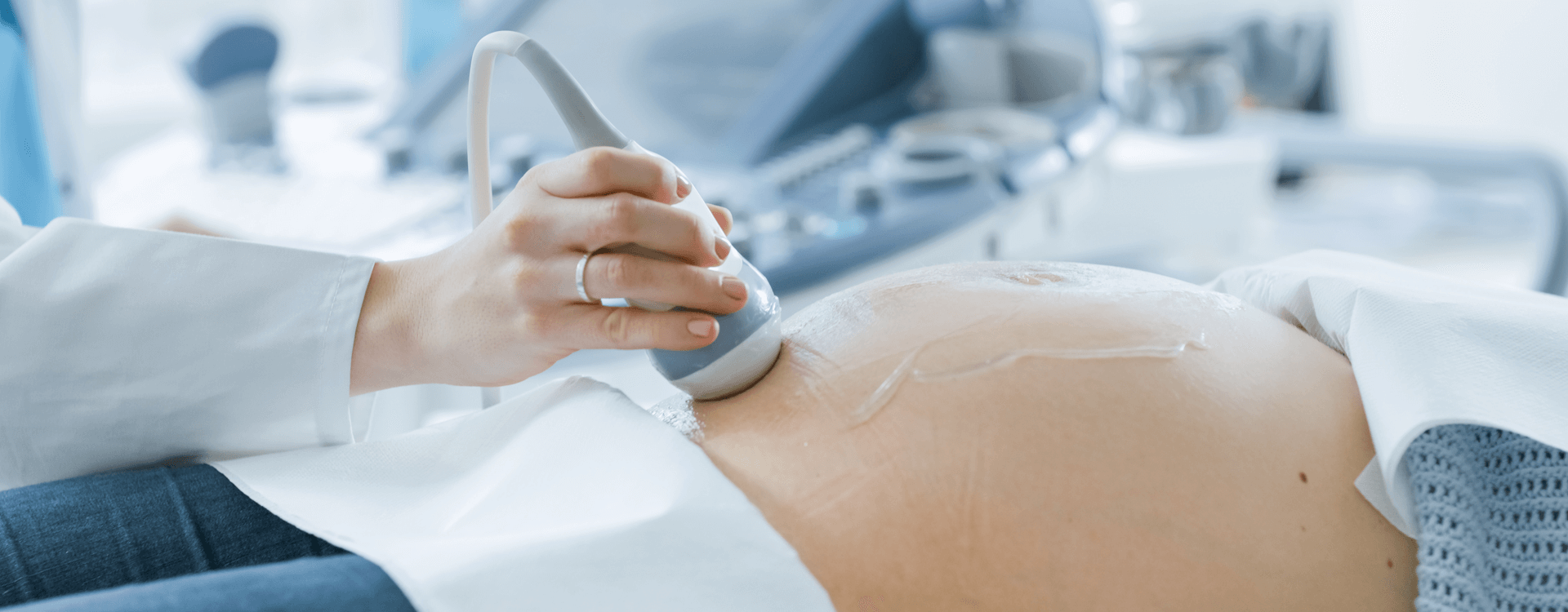Quickening is one of the most magical milestones during pregnancy. For many moms-to-be, it’s a moment of pure excitement as those early flutters or gentle nudges begin to show that your little one is active and growing.
But what exactly is quickening, and when should you expect to feel it?
We’ll walk you through what quickening feels like, when it happens, and what it means for your baby’s development. Get ready to celebrate the sweet sensation of your baby’s first movements!
What Is Quickening in Pregnancy?
Quickening is the term used to describe the first movements your baby makes inside the womb. For first-time moms, it can be difficult to recognize at first, but quickening marks the exciting moment when your baby starts to become more active [*].
Quickening isn’t just a milestone for the mom-to-be, it’s also an important indicator that your baby is developing well! As your pregnancy progresses, you’ll notice the movements becoming stronger and more frequent, signaling that your little one is growing and thriving in there!
What Does Quickening Feel Like?
For many women, quickening feels like light fluttering or bubbles popping. Some describe it as feeling like a gentle tap or a butterfly’s wings brushing against your insides, however, it varies from person to person. These early movements can be subtle, and it’s not uncommon for first-time moms to confuse them with gas or digestion sensations [*].
As you get further along in your pregnancy, these movements will become more pronounced and easier to distinguish from other bodily sensations. It’s a thrilling experience, even if it’s initially light and fleeting. Eventually, you’ll begin to feel more distinct kicks, rolls, and jabs as your baby grows stronger!
Does Quickening Feel Like Cramps?
Quickening and cramping are very different sensations. Cramping is usually associated with discomfort or pain, often in the lower abdomen, and may feel like a pulling or tightening sensation. Cramping can be a sign of various pregnancy-related issues, such as implantation, round ligament pain, or even a potential miscarriage [*][*].
Quickening, on the other hand, is a light, rhythmic movement. It's not painful — more of a gentle nudge that comes and goes. While cramping is a common pregnancy symptom, quickening should feel more like a soft reminder that your baby is active and developing.
However, if you experience painful cramps or severe discomfort, it’s always a good idea to consult your healthcare provider [*].
When Does Quickening Occur?
Quickening usually happens between 16 and 25 weeks of pregnancy. For first-time moms, it's typically around 20 weeks, but experienced moms may notice it a bit earlier [*].
The position of your placenta can play a role in when you feel your baby move! If it’s at the front of your uterus (anterior placenta), it can act like a little cushion, making those early movements a bit harder to feel and potentially delaying the first flutters by a few weeks [*][*].
Can You Feel a Baby Move at 8 Weeks?
At 8 weeks of pregnancy, it’s too early to feel your baby move. At this stage, your little one is still very small, about the size of a raspberry, and their movements are too subtle and tiny to be felt. Fetal movement typically begins to be noticeable after around 16 weeks, as the baby grows larger and stronger. While some women may experience sensations like bloating or gas during the early weeks, these aren’t related to fetal movement. So, while it’s exciting to think about those first kicks, you’ll have to wait a little longer before feeling them [*]!
Where Do You Feel Quickening?
Quickening is usually felt in the lower abdomen, right where your uterus is located. As your baby grows, those movements might shift higher up in your abdomen, especially as they become more active and stronger. The exact spot where you feel quickening can vary. Some moms notice it on one side, others feel it right in the middle.
It’s a fun, exciting sensation that grows more noticeable with time, and it’s one of the first ways you’ll really connect with your little one as they start moving around [*]!
How Often Do You Feel Quickening?
How often you feel quickening can really vary depending on the mother, but generally, those first flutters might be pretty sparse. You could feel them just once a day or every few days, as your baby is still small and their movements are subtle.
As you get further into your second trimester, you’ll probably start noticing movements more regularly. Maybe even a few times a day! By the time you hit the 3rd trimester, those little kicks, rolls, and jabs will become much more frequent and noticeable.
Keep in mind, how often you feel quickening also depends on things like your baby’s position, your body type, and whether it's your first pregnancy.
Regardless of the frequency, each little movement is an exciting sign that your baby is becoming more active [*]!
How Long Does Quickening Last?
Quickening usually lasts until about 20–25 weeks of pregnancy, gradually transitioning into more defined movements like kicking. As your baby grows these movements will start to feel more pronounced and frequent. By 24–26 weeks, you'll likely begin feeling more distinct kicks, rolls, and stretches that can last longer and feel stronger [*]!
Additional Quickening FAQ
Why is it called quickening?
The term "quickening" comes from the old use of the word "quick" meaning "alive" or "living." Historically, quickening was seen as the moment when the fetus was thought to become "animated" or attain a form of life. This idea dates back to Aristotle, who believed that a fetus becomes fully human at this point [*].
Why does quickening happen?
Quickening kicks in as the baby strengthens its muscles, joints, and coordination, which builds the foundation for future skills like crawling and walking. These little wiggles also give the nervous system a workout, boosting sensory development along the way.
Plus, all that movement helps improve blood flow through the umbilical cord and placenta, making sure the baby gets plenty of oxygen and nutrients.
In short, fetal movement is a great sign of healthy, active growth [*]!
What is the difference between quickening and kicking?
Quickening typically happens between 16 and 25 weeks of pregnancy and is often described as gentle flutters or nudges. Kicking, on the other hand, refers to the stronger, more pronounced movements (like actual jabs or kicks) that become more frequent as the baby grows and its muscles develop.
So, while quickening marks the first awareness of movement, kicking represents the baby’s growing strength and coordination as it becomes more active [*].
How long does it take for quickening to turn into kicks?
The transition from quickening to more distinct kicks typically happens over the course of several weeks, usually between 18 and 25 weeks of pregnancy.
Initially, during quickening, the movements may feel like gentle nudges, as the baby is still small and its movements are less coordinated. As the fetus grows and its muscles and nervous system mature, these movements become stronger, more frequent, and easier to distinguish, turning into actual kicks.
By around 24 weeks, the movements generally become much more noticeable and feel more like jabs, kicks, or rolls. This progression reflects the baby’s increasing strength and coordination as it develops [*].
What is the best position to feel quickening?
Around 30 weeks of pregnancy, it's a great idea to check with your doctor or midwife about your baby’s position, as it can have a big impact on the ease of your labor.
The best position for a smoother delivery is Occiput Anterior (OA), where the baby’s back is facing the front of your abdomen and slightly to the left. This alignment allows the smallest part of the baby's head to come down through the pelvic rim, making labor faster and more straightforward. If your bump is prominent and forward-leaning, with kicks mostly felt on the right side, it's a good sign that your baby is in the ideal position.
On the other hand, if your baby is in the Occiput Posterior (OP) position (back-to-back), labor can be longer and more uncomfortable, often leading to more back pain as the baby’s head presses against the spine. To help encourage your baby into the optimal position, try spending more time upright or in forward-leaning positions. Using an exercise ball, practicing yoga, and staying active can all help promote the OA position [*].
Does quickening happen more at night?
A recent study from the University of Auckland has reassured expectant moms that it’s completely normal for babies to be more active in the evening and at bedtime. In fact, 79% of women reported feeling stronger movements at night, which suggests that babies have their own natural rhythm and tend to get busier as the day winds down. The study also cleared up some myths like the idea that cold drinks or sugary foods can prompt the baby to move.
Turns out, fetal movements are more noticeable when moms are sitting quietly and relaxed. While decreased movement can sometimes be a sign to watch out for, the study found that many women who notice less activity still go on to have healthy pregnancies.
However, if your baby’s usual evening movements change, it’s always best to check in with your healthcare provider just to be safe [*].
Can quickening feel uncomfortable?
Most women don’t find quickening uncomfortable, but as your baby grows and movements become stronger, it can occasionally feel a bit intense.
Early on, you might experience light taps or flutters, which are usually harmless but may catch you by surprise. As the baby gets bigger, you might start feeling more noticeable kicks or punches, which can sometimes feel stronger or more pronounced.
While these movements are typically not painful, they can become uncomfortable, especially if your baby is particularly active or in a position that puts pressure on certain areas.
However, quickening should never cause sharp or severe pain — if you experience persistent discomfort or cramping, it’s always a good idea to reach out to your healthcare provider for reassurance [*].
Is it normal to not feel quickening every day?
It’s totally normal not to feel quickening every day, especially early on in your pregnancy.
In the second trimester, when you’re likely to start feeling those first movements between 14-18 weeks, they may be subtle and not consistent right away. You might have days where your baby is more active and others where things are quieter — that’s perfectly okay, especially when your baby is still small!
As your pregnancy progresses, you’ll start to notice more regular movement patterns. Remember, every baby is different! If you’re not feeling movement every day, try not to stress. However, if you notice a sudden drop or change in movement later in pregnancy, don’t hesitate to reach out to your healthcare provider for peace of mind [*].
How can I get my baby to move more?
If you’re looking to get your baby moving, here are some fun and simple tricks:
- Start by having a healthy snack like cheese and crackers or fruit. Those blood sugar boosts can encourage your baby to kick into gear!
- A little movement on your part, like doing some jumping jacks or jogging in place, can also help get things going.
- If that doesn’t do the trick, try gently poking or wiggling your belly. Sometimes a light nudge is all it takes!
- Around 22 weeks, you can even shine a flashlight on your belly to see if your baby responds to the light.
- Lying down and relaxing may help too, as babies tend to be more active when you're still.
- Talking, singing, or playing some music for your baby can also prompt a little wiggle!
Just remember, every baby is different, so if you notice any changes in movement patterns, don’t hesitate to check in with your doctor [*].
What do I do if I don't feel my baby moving?
If you notice that your baby isn't moving as much or you can't feel any movement at all, it's important to reach out to your midwife or maternity unit right away — don’t wait until the next day, even if it's the middle of the night.
Any change in your baby's usual movement pattern could be a sign that something needs attention, and getting checked out sooner rather than later is always the best approach.
Your healthcare team will check your baby's heartbeat and movements to ensure everything is on track. Avoid using a home doppler to check the heartbeat, as it’s not a reliable method of assessing your baby’s well-being.
Remember, every baby has their own pattern, but if you notice a significant shift in movement, it’s always best to get it checked for your own peace of mind and your baby’s health [*].
The Bottom Line
Quickening is the exciting moment when you start to feel your baby move, typically between 16 and 25 weeks of pregnancy, though the exact timing varies.
For first-time moms, it may feel like gentle flutters, bubbles, or light taps, often confused with gas or digestion at first. As your pregnancy progresses, these subtle movements will become stronger and more distinct, turning into actual kicks and rolls.
It’s completely normal not to feel movement every day in the early stages, especially since those initial movements can be infrequent and subtle. However, if you notice a sudden decrease or complete lack of movement, it’s important to reach out to your healthcare provider right away, don’t wait until the next day. They will check your baby’s heartbeat and movements to ensure everything is okay.
You can try some fun tricks to encourage your baby to move, like having a healthy snack, doing light exercises like jumping jacks, or simply lying down and relaxing. Babies tend to be more active when you’re still and calm.
And remember, every baby has their own movement pattern, so if something feels off, it’s always best to check in with your doctor for peace of mind and reassurance.
About MiracleCord
MiracleCord helps keep families safe by banking their infant’s umbilical cord blood and tissue stem cells.
More than 80 diseases and conditions are FDA-approved for cord blood stem cell treatments, and more than 6,800 clinical trials have been initiated to explore the potential for additional treatments.
Discover why Global Health & Pharma rated MiracleCord the #1 U.S. Cord Blood Bank by downloading our Free Info Kit.
Just as having nutritious snacks available in the hospital can support your energy and well-being during and after pregnancy, MiracleCord is dedicated to safeguarding your family's future health through innovative cord blood banking.
DISCLAIMER: THE INFORMATION ON THIS WEBSITE IS NOT INTENDED TO BE USED AS MEDICAL ADVICE.The materials and information contained on the MiracleCord website is provided for educational and informational purposes only, and is not intended to, and does not constitute, medical or other health advice or diagnosis, and should not be used as such. You should not use this information to diagnose or treat a health problem or disease. If you are seeking personal medical advice, you should consult with a licensed physician. Always consult with a qualified health care provider regarding a medical condition.




